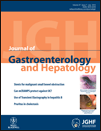Preliminary study of enteroscopy-guided, self-expandable metal stent placement for malignant small bowel obstruction
Abstract
Background and Aims: Technical limitations of conventional endoscopes and delivery systems frequently hamper palliative endoscopic placement of self-expandable metal stents for malignant small bowel obstruction. This study examined feasibility of the double balloon enteroscope-guided withdrawal-reinsertion method as a rescue procedure in patients with failed palliative stent placement for malignant small bowel obstruction.
Methods: We enrolled 19 consecutive patients with small bowel obstruction due to metastatic gastric (n = 15) or colorectal cancer (n = 2), or primary small bowel carcinoma (n = 2), in whom previous attempts to place self-expandable metal stents using conventional endoscopy had failed. Ten patients had undergone previous gastric surgery. After passing a guide-wire using an enteroscope with or without the double-balloon method, the enteroscope was withdrawn. A conventional endoscope was re-inserted along the guide-wire, and through-the-scope self-expandable metal stent placement was performed.
Results: Obstruction sites were efferent jejunal loop, proximal jejunum, and third duodenal portion. Technical success was achieved with 94.7% (18/19) of stents, and clinical success occurred with 84.2% (16/19) of patients. The gastric outlet obstruction score (pre-procedure: 0.68 ± 0.58) increased by one week (2.05 ± 0.52, P < 0.001). Stent migration and restenosis occurred in two (10.5%) and four (21.1%) of 19 stents, respectively. Median stent patency duration was 67 days and median survival was 93 days; these did not differ significantly by palliative chemotherapy (P = 0.76 and 0.67, respectively).
Conclusions: The double-balloon enteroscopy-guided method followed by conventional endoscopic self-expandable metal stent delivery was effective for rescue palliation of malignant small bowel obstruction.




